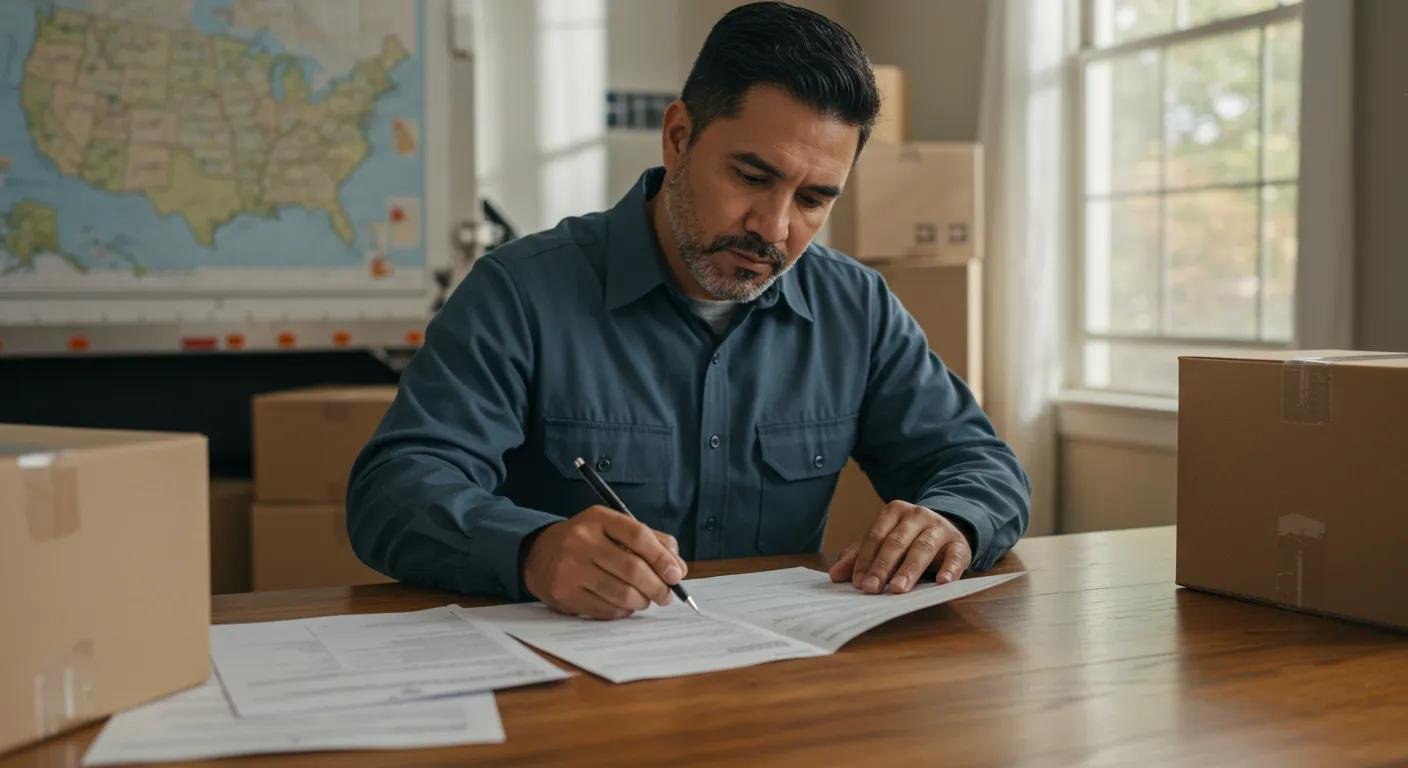Understanding Different Types of Residential Moving Services

Residential Moving Types Guide – Horizon Boston Movers | Movers Boston
Moving homes demands choosing the right residential moving service types to avoid delays, hidden fees, or damaged belongings. This guide clarifies the core categories—local, interstate, and international moves—compares full-service and DIY approaches, explores partial-service and labor-only options, examines specialized handling for fragile items, and outlines how to select the optimal moving solution. By understanding distances, regulations, service inclusions, and company credentials, readers gain the confidence to plan a seamless relocation.
What Are the Main Types of Residential Moving Services?
Residential moving service types categorize moves by distance and assistance level, ensuring each household’s needs are met. Four principal options exist based on scope and support:
- Local Moving: Short-distance relocations within a metropolitan area.
- Interstate Moving: State-to-state moves governed by federal regulations.
- International Moving: Overseas relocations subject to customs and shipping logistics.
- DIY Moving: Self-managed relocations using rental equipment and personal labor.
These main types establish a foundation for deeper comparisons of cost, convenience, and compliance.
What Defines Local Moving Services and When Are They Ideal?
Local moving services handle relocations within the same city or county, typically billed by hourly rates and tailored for short distances. Local movers provide loading, transportation, and unloading, making last-minute schedules manageable and cost-effective. For professional local and long-distance assistance, companies like Horizon Boston Movers offer solutions that streamline urban and regional transitions. Local moving service IS_A Residential Moving Service and caters to moves under 100 miles, ideal for homeowners seeking quick, reliable support. This focus on proximity and speed naturally leads to understanding the broader requirements of interstate moving.
How Do Interstate Moving Services Differ and What Regulations Apply?

Interstate moving services transport household goods across state lines under Federal Motor Carrier Safety Administration (FMCSA) oversight. These moves require filing a bill of lading, purchasing liability coverage, and obtaining a USDOT number. Key regulations include:
- Mandatory FMCSA registration for carriers.
- Rights and responsibilities defined in the mover’s contract.
- Minimum valuation coverage for lost or damaged items.
Interstate moving REQUIRES FMCSA regulation and INVOLVES state-to-state transport, ensuring consumer protection over longer distances. Understanding these federal guidelines paves the way for the added complexity of international relocations.
Recommendations to the U.S. Dept. of Transportation to Improve Household Goods Consumer Education, Simplify and Reduce Paperwork
A working group report to the U.S. Department of Transportation highlighted the importance of consumer education and clear regulations for interstate household goods moves. It emphasized the need for updated guidance on consumer rights and responsibilities, as well as streamlined paperwork requirements to protect consumers from fraudulent practices and ensure transparency in the moving industry.
This research directly supports the article’s discussion on federal regulations (FMCSA oversight) and consumer protection for interstate moving services, including the need for clear contracts and understanding rights.
What Should You Know About International Moving Services?
International moving services coordinate cross-border relocations, combining ocean freight, air shipping, and customs clearance. Effective planning addresses visa requirements, import duties, and packing methods for long-haul transport. Critical considerations include:
- Customs documentation accuracy to avoid delays.
- Containerized shipping options for large shipments.
- Coordination with overseas agents for door-to-door delivery.
International moving REQUIRES Customs Clearance and USES Shipping Containers to safeguard goods en route, ensuring household items arrive on schedule and intact.
Introductory guide to international logistics
This guide outlines the complexities of international logistics, which involves the planning, implementation, and oversight of goods movement across international borders. It covers critical aspects such as international transportation, distribution, customs clearance, and the coordination required for efficient global supply chains, emphasizing the importance of these elements for successful cross-border relocations.
This source provides foundational information on the processes and considerations involved in international logistics, directly supporting the article’s section on international moving services, customs clearance, and shipping logistics.
These overseas logistics underscore the value of choosing the right level of service, whether full-service or self-managed.
How Do Full-Service Moving and DIY Moving Compare?
Comparing full-service moving and DIY moving reveals distinct mechanisms, cost structures, and benefits that suit different priorities. Full-service moves consolidate every element under one provider, while DIY moves place responsibility on the household, affecting time, effort, and liability.
What Does Full-Service Moving Include and Who Benefits Most?
Full-service moving includes professional packing, loading, transportation, unloading, unpacking, and basic furniture assembly. This all-inclusive approach PROVIDES maximum convenience and MINIMIZES physical strain.
Full-Service Moving INCLUDES Packing and Protecting items, making it critical for anyone prioritizing time savings and peace of mind. Recognizing this all-in-one method sets the stage for understanding the practical steps of a DIY relocation.
What Are the Steps and Considerations for DIY Moving?
DIY moving empowers individuals to handle their own packing, loading, and driving, leveraging rental trucks and self-supplied materials. Steps include:
- Reserving a rental truck or trailer.
- Gathering appropriate packing supplies and protective materials.
- Enlisting family or friends for loading and unloading assistance.
- Securing insurance coverage for rental equipment and cargo.
DIY Moving UTILIZES Rental Truck and REQUIRES Self-Packing, making it cost-effective but demanding careful planning and physical effort. These considerations highlight the appeal of partial-service options when full control is needed without full vendor involvement.
What Are Partial-Service Moving and Moving Labor Options?
Partial-service moving and labor-only choices offer flexible assistance levels, letting homeowners pick specific tasks to outsource while retaining control over the rest.
Which Services Are Included in Partial Moving and When to Choose Them?
Partial-service moving covers selected tasks—such as packing, loading, or unloading—according to individual needs. Available options include:
- Full or partial packing of fragile items.
- Loading and securing belongings onto moving vehicles.
- Transportation coordination without packing support.
Partial-Service Moving INCLUDES Loading and Packing support, making it ideal for those with limited time or specialized packing challenges. Having explored partial involvement, it is logical to examine pure labor assistance.
How Can Moving Labor Assist Your Residential Move?
Moving labor services supply trained personnel to handle physical tasks without providing equipment or transport. Typical offerings are:
- Heavy lifting and furniture handling.
- Loading and unloading rental trucks or containers.
- In-home repositioning of large items.
Moving Labor PROVIDES Physical Assistance and complements any transport arrangement, enabling efficient moves when specialized help is needed without full-service commitments.
What Specialized Residential Moving Services Are Available for Fragile or Unique Items?

Specialized residential moving services focus on high-value, delicate, or oversized goods, employing custom methods and equipment.
Which Items Require Specialized Moving Solutions?
Certain household goods demand expert handling due to size, weight, or fragility:
- Grand pianos and musical instruments.
- Fine art, antiques, and sculptures.
- Motor vehicles, motorcycles, and boats.
Specialized Moving HANDLES Fragile Items and REQUIRES Custom crates or lift-gates, ensuring valuable possessions receive dedicated care. Recognizing item requirements leads to understanding how experts execute these moves.
How Do Specialized Movers Handle Fragile and Valuable Goods?
Professional specialized movers use tailored strategies—crating, climate-controlled transport, and shock-absorbent padding—to protect precious items. Core methods include:
- Custom wooden crates with foam liners for artwork.
- Hydraulic lift systems for pianos and heavy antiques.
- GPS-tracked, climate-regulated vehicles for sensitive instruments.
Specialized Moving REQUIRES Special Equipment and HANDLES valuables with precision, securing them against damage during transit and arrival.
How Do You Choose the Right Residential Moving Service for Your Needs?
Selecting the optimal moving service depends on project scope, budget constraints, and desired level of involvement, guided by objective evaluation criteria and company vetting.
What Key Factors Should Influence Your Moving Service Choice?
Decisions hinge on factors such as:
- Distance and applicable regulations.
- Total budget and cost-control preferences.
- Complexity and fragility of transported items.
- Required timeline and scheduling flexibility.
User CHOOSES Moving Service based on Distance, Budget, Time, and Item Characteristics, ensuring tailored solutions that align with relocation demands. With these criteria in mind, evaluating prospective movers becomes the final step.
What Should You Look for When Hiring a Moving Company?
When vetting moving companies, assess credentials and track record through:
- Valid FMCSA or state licensing and insurance coverage.
- Transparent, itemized estimates and valuation options.
- Positive customer reviews and third-party ratings.
- Clear policies on liability, claims, and additional fees.
Moving Company SHOULD_HAVE License, Insurance, and demonstrated reliability to guarantee accountability and satisfaction throughout the relocation process.
A thorough understanding of residential moving service types empowers homeowners to balance cost, convenience, and peace of mind. By evaluating distances, service inclusions, and company credentials, individuals can craft a plan that fits their unique relocation needs. This clarity transforms a potentially stressful move into a structured, manageable process. When service requirements and provider qualifications align, the next home transition becomes a confident step forward.


